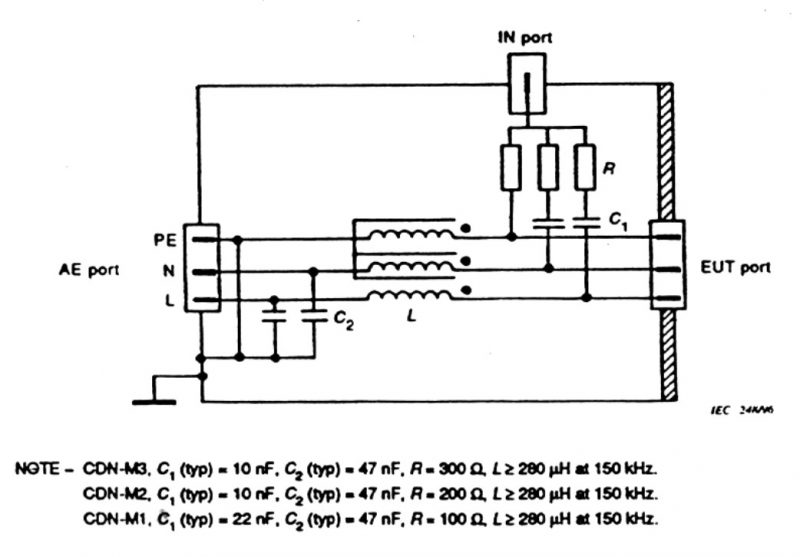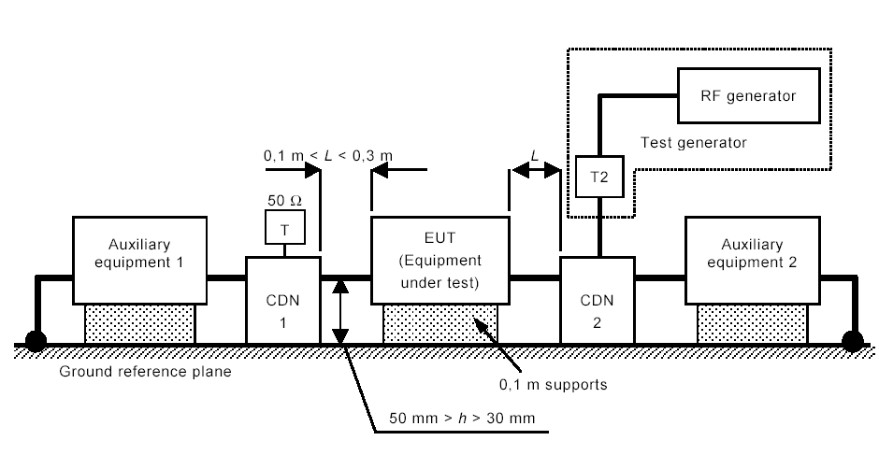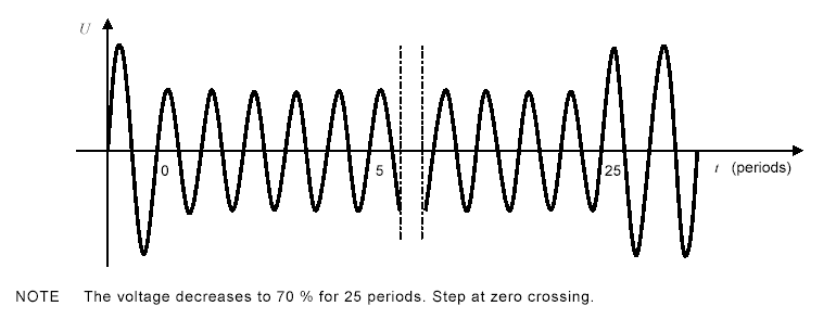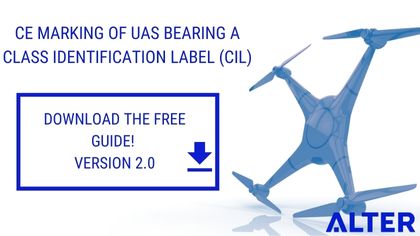This type of test has the purpose that electrical and electronic equipment have a good performance, even with the possibility of being affected by being in an electromagnetic environment with signals that exceed the tolerable voltage that the equipment can end up with. The driven immunity comes from the ability of the equipment to work under a disturbed electromagnetic environment.
It is necessary to have some aspects for the necessary procedures to carry out the tests of immunity conducted through the electromagnetic medium and its implantation in the laboratory.
- Check the operation of the equipment by applying a signal modulated in amplitude (1 kHz – 80%) to power lines AC, DC, signal, control in the frequency range of 150 kHz – 80 MHz.
- RF transmitters intentionally produce the fields of electromagnetic energy of conducted RF in the 9 kHz to 80 MHz bands.
- The input and output conductors and the connection cables, telecommunication lines, intermediate wiring behave like networks of passive receiving antennas since they can correspond to several wavelengths.
⇒ Levels: Depends on the standard, from 1 Vrms to 10 Vrms.
⇒ Criterion: During the test, the equipment must operate without degradation or loss of function (criterion A, normally).

Coupling – uncoupling nets: RAD-M

Test setup with RAD
Gaps, interruptions, and voltage variations
- Check the operation of the equipment when applying the faults of the power network to the power supply port of the equipment (AC).
- Voltage gaps and short interruptions are phenomena present in the electrical network due to malfunctions or sudden changes in load.
- They are phenomena of a random nature and can be characterized by the duration of the phenomenon and the level at which the tension decreases.
- A voltage gap is a momentary decrease of the nominal voltage to a certain value during very short periods of time (of the order of ms)
⇒ Levels: Depends on the norm, 0% Gaps for 10 ms, 70% for 500ms, or 0% interruptions for 5 seconds.
⇒ Criterion: After the test, the equipment must operate without degradation or loss of function. During the test, some degradation of the operation is allowed (criterion B, normally).

The waveform of a gap – 70% signal



